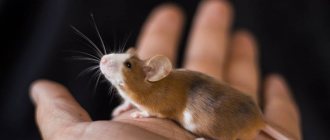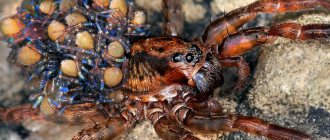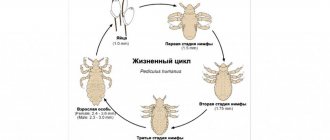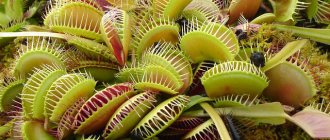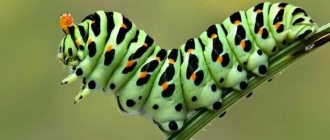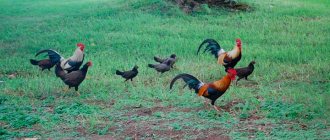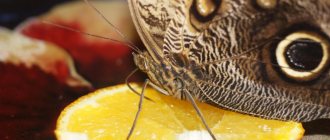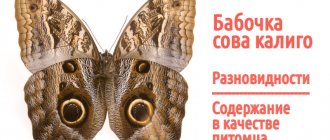Found a butterfly in the entrance? Dead? NO! She's just hibernating, breathe on her and she'll come to life. Question - what should I do with her now? Don't let her go outside in the cold. Yes, I asked myself the same question. It’s a pity, I understand, but freezing was also an idea, but I came across a website - https://www.babochka.umbura.com/ And now - how to care for an ordinary butterfly and how to feed it. The biggest problem for butterflies in our apartments is low air humidity, which can cause butterflies’ legs and antennae to dry out very quickly and break off. The butterfly will live better and longer if you create humid conditions for it; during the day, the butterfly can sometimes be sprayed from a spray bottle to water the flowers, and at night, you need to put a wet cotton wool on the bottom of the box where it will spend the night. The box needs to be tightly closed (don't worry - butterflies need very little air to breathe). Butterflies can be divided into two large groups: diurnal (active during the day) and nocturnal (active at night). Daytime butterflies in your house will fly during the day, calm down in the evening, and sleep at night. Nocturnal ones, on the contrary, will sit quietly all day, and in the evening they can begin to move and even fly. But if it’s cool in your apartment, the butterfly will sit quietly all night. How to feed a butterfly, what do butterflies eat. The butterfly needs to be fed once a day. To do this, prepare “nectar” - pour 2 teaspoons of water at room temperature into a mineral water bottle, add about 1/5 teaspoon of sugar (or honey) and mix thoroughly. Take the butterfly with folded wings by the chest and place it next to the cork. A hungry butterfly begins to drink quickly, but if it curls its proboscis and tries to escape from your hands, it means it does not want to eat. The butterfly's taste buds are located at the ends of its front legs: sometimes, in order for it to actively search for food, it only needs to touch the nectar with its front leg. If the butterfly does not unfold its proboscis, you can try using a toothpick or a sharpened match to carefully unfold it and dip it into a drop of nectar. Some butterflies readily eat rotten fruits, preferably banana or mango, but melon, orange, watermelon, as well as apple or other juicy fruits are also suitable. Peel them (use only the middle), as many fruits are sprayed with insecticides and other chemicals for better storage. Mix the rotten pulp of the fruit with pre-prepared “nectar”, and offer this mixture to the butterfly. You should not hold the butterfly while feeding. When feeding, you can see how expressively the butterfly's proboscis moves. The larger the butterfly, the more noticeable the movements of the proboscis. Feeding takes from 2 to 15 minutes. When the butterfly satisfies its hunger, it flies away from the feeder. Immediately after birth from the pupa, butterflies do not eat for about a day, so there is no need to force it. Some species of butterflies do not eat at all, due to the absence of a proboscis. The butterfly lives off the energy accumulated by the caterpillar. Living butterflies should be inaccessible to small children and animals! The butterfly should be kept away from chemicals, detergents, solvents, fuels and lubricants, and small children and pets should not be allowed to put them in their mouths. Basically, the butterfly sits comfortably on your curtains and occasionally flies, mainly to the light source. With proper maintenance, the lifespan of butterflies can be extended to 2-3 weeks. from the site: https://www.babochka.umbura.com/ — And the easiest thing is: take it and release it to where they took it Categories: Butterfly
How the peacock butterfly overwinters: revealing the secrets of the insect
A striking representative of the nymphalid family, the peacock eye can be seen in early spring. It is found in parks, gardens, forests and meadows. This species is considered one of the most beautiful in the world. Red-brown wings with bright eyes attract close attention. Watching a fluttering moth, you want to know about its lifestyle. No less interesting is how the peacock butterfly winters?
What to feed exotic insects
The basis of butterfly nutrition in nature is nectar. It’s easy to make your own delicacy that will appeal to tropical residents. To do this, sugar or honey is dissolved in water (in a ratio of 1 to 10). It is recommended to feed unusual pets once or twice a day.
Pour the sugar solution little by little - there are often cases when, while eating, insects get their wings dirty due to carelessness and then have difficulty flying. The butterfly must be carefully placed on the edge of the saucer. If she refuses the treat, try using a toothpick to gently untwist the proboscis and guide it into the syrup. After finishing the meal, the butterfly will fly away.
In addition to sugar syrup, insects like to feast on rotten fruits - apples, bananas, melons and oranges are suitable.
Description of the butterfly
Daytime butterflies of the peacock eye species belong to the order Lepidoptera and the family Nymphalidae. Insects are medium in size - wingspan 50-65 mm, body length 27-30 mm. Females are slightly larger than males. The main color of the wings is red or red-brown. An individual feature of the species is 4 large “eyes” located on each wing. Spots of various shades of blue are bordered with black and white.
The characteristic pattern is a defense mechanism against predators. When attacked by birds, the insect opens its wings, disorienting the enemy. This is usually enough to scare away small birds such as sparrows. A predator may partially damage the tip of its wings, but the butterfly will not lose its ability to fly.
On the back of the wings there is a protective coloring. Yellowish wavy stripes and dots on a black-brown background help blend into the surface of trees, dry leaves and plant debris. The inconspicuous appearance of the peacock butterfly with folded wings provides camouflage from enemies in winter and summer.
Life cycle
Lepidoptera are insects with a full cycle of transformation. They go through 4 stages of development: egg, caterpillar, pupa and adult. In the peacock eye species, this takes about 1 year. Overwintered females mate with males in the spring. In May, they lay up to 300 eggs on food plants: nettle, raspberry, willow, hop. The caterpillars are black in color, their body is covered with white dots, hairs and prickly spines. They live in large groups, eating plants to the ground. Spread before pupation. The pupal stage lasts 1-2 weeks.
Information. In northern latitudes, one generation appears per season, in southern latitudes - two. The first adult years are from June to July, the second - from August to September.
Females of the second generation live up to 6 months. Half of their life is spent in a state of suspended animation. With the onset of cold weather, the adults fall asleep, and in the spring they flutter over the flowers again.
Habitat
The diurnal moth is widespread throughout Europe and Asia. Insects avoid flying into areas of the far north and tropical deserts. The largest population settled in Germany. And on the island of Crete there are no representatives of the species. Butterflies are found in forest clearings, ravines, fields, gardens and squares, and in cities. In the mountains they live at an altitude of 2-2.5 thousand m above sea level.
Preparing for winter
How does the peacock butterfly prepare for the cold winter? After emerging from the pupa, the imago begins to actively feed. Insects that go to sleep during the cold season diligently store nutrients from the end of summer. Their main diet is nectar from flowering plants: elderberry, dandelions, clover, lavender. Rotten fruits and tree sap help stock up on nutrients for several months of suspended animation.
Selecting a location
The peacock butterfly hibernates in temperate latitudes in September and in the south in October. She chooses a safe place where she will be sheltered from the cold and enemies. It could be:
- attic of a house or outbuilding;
- a cavity in the bark of a tree;
- hollow;
- cave and rock crevice;
- forest or meadow litter.
Winter hibernation is called hibernation. During this period, all life processes slow down (breathing, digestion), and body temperature decreases. The duration of torpor depends on environmental conditions. Sleep may be interrupted as a result of rising temperatures. The butterfly chooses a secluded place; if it is a vertical surface, it clings tightly with its paws. Motionless, with dark folded wings, it looks like a dry autumn leaf.
Advice. If you find a peacock butterfly hibernating in a dry, comfortable place, do not disturb it. The insect will sleep peacefully until spring.
For better or worse?
Butterfly in winter
First, you need to determine exactly why a butterfly appears in the house in winter? The first thought that came to mind at the sight of such an unexpected guest will help here.
Free Online Tarot Course Eliminate 10 Key Beginner Mistakes and Start Reading Tarot Cards with Ease Without Any Prior Knowledge
GET ACCESS
Tarot and Money 5 steps from love for cards to financial independence from the founder of the Russian Tarot School Sergei Savchenko
FREE SEAT
Runes without fear and energy consumption How to use Runes correctly? Receive 3 gifts that will help you quickly apply Runes to achieve your goals
I WANT A PRESENT
Naturally, most often it is surprise and even shock! It is difficult to react differently if the temperature outside has been below freezing for a couple of months. And this means: some incident will happen that will become a real miracle for you, or at least seriously surprise you. The nature of future events can also be determined intuitively. If the insect’s visit pleasantly surprised and even delighted you, then get ready for:
- joy;
- arrived;
- replenishment of the family (birth of a child, wedding);
- guests;
- conversation with a wise person;
- contemplative mood and spiritual growth;
- fulfillment of a dream.
If the appearance of a summer insect has alerted you or even frightened you, then something unpleasant is likely to happen.
Important: Only in rare cases does a butterfly appear in winter, leading to trouble and even disaster. To confirm a negative omen, it is necessary that it be accompanied by a number of additional signs with a similar meaning.
Dangers of insects in winter
Most insects survive the winter cold at the pupal stage; the cocoon provides additional protection from frost and microorganisms. Some butterflies migrate from the cold to southern latitudes, where they safely survive the winter season. But the peacock's eye, just like the urticaria and lemongrass, awaits the arrival of spring in its habitats. He hides in a pile of autumn leaves and plunges into suspended animation.
Global warming has a negative impact on wildlife. Increasingly, thaws occur in the middle of winter with an average daily plus temperature of up to 10 °C. Because of the heat, insects and animals wake up early. In winter, you can see a peacock butterfly emerging from a hollow or other shelter. This is a disastrous awakening. The insect wastes energy in vain, and it may not be able to find another suitable place to continue hibernation.
Information. For a successful winter, butterflies need dry shelter. In a humid environment, they are attacked by deadly fungal infections.
Not all butterflies will be able to survive the cold season. There are several reasons for the death of insects:
- They often starve to death when they cannot store enough energy in the fall.
- They become food for birds or animals. Small rodents, most often mice, look for food in hollows, outbuildings, and forest litter in winter.
- They die from various infections.
Waking up in the spring after wintering, peacock butterflies look for any food sources - primroses, dandelions. They flutter over flowers, collecting nectar, looking for juice that appears on the bark of trees. Males occupy sunny areas and wait for overwintered females to appear for mating and procreation.
Autumn concerns of insects
The time has come when mothers take our warm sweaters and gloves out of the closet, because summer is over and autumn will soon pass, and a snow-white guest will come to us - winter. The bear is looking for a den in which to sleep until spring, the birds are flying to warmer climes, and how do insects prepare for winter?
Let's remember what insects we know
How insects prepare for winter
As soon as summer begins to wane, insects, like many other animals living in our area, begin to prepare for winter. This happens in different ways. It turns out that in Russia, most adult insects do not survive until winter. Their lifespan is usually short - from several months to one or two days. Some insects, having emerged from the pupa shell and laid eggs, die immediately. For the survival of a species, it turns out that it is much more convenient to survive difficult times at other stages of development: eggs, pupae or larvae. There are several dozen tiny eggs lying somewhere behind a peeling piece of bark, and they don’t care about the winter cold. Under the thinnest shell they reliably store the lives of future six-legged generations. Well, those insects that need to survive until spring intensively gain fat and get rid of water. Of course, it is impossible to get rid of all the water, otherwise the body will die. Therefore, they produce antifreeze - a substance that prevents freezing. Most often it is glycerin. Without it, even slight negative temperatures will lead to the formation of ice crystals that destroy delicate living tissues. With the onset of cold weather, the life processes of a hibernating insect slow down, although they do not stop completely. Insects' resistance to cold in this state is simply amazing. Overwintering pupae can withstand temperatures down to -90 degrees and normal insects then develop from them. How does a ladybug prepare for winter?
Everyone loves this little beauty because it has a bright glossy color and is considered a symbol of happiness. However, the bugs are not very friendly with each other; they are apparently dreamers who enjoy life alone. But when the leaves begin to fall outside and the air becomes cool, ladybugs unite in groups and look for warm places for wintering, such as tree bark, moss, stones. Smart red and black beads hide in apartments. The main task of the sun in autumn is to find a dry and cozy place to relax. Unfortunately, these insects do not see a snowy winter, because they hibernate before it arrives.
How does a dragonfly prepare for winter?
By winter, most dragonflies (excluding migratory species) die, having previously laid eggs in the water. True, the dragonfly does not die, but hibernates and only lays eggs in the spring. The eggs hatch into larvae that live in water for 2-3 years and gradually grow. In the last year of development, the larva turns into an adult dragonfly, the emergence of which occurs in some in the spring, in others in the summer.
How does a butterfly prepare for winter?
Most butterflies (not counting migratory species) die before the onset of winter. But the females leave behind clutches of eggs from which caterpillars develop. Some of them manage to turn into pupae in the summer, others remain to spend the winter in different shelters: some hide in the ground, and others in spider web nests on tree branches. However, among adult butterflies there are wintering ones that do not die, but fall into torpor. These include: urticaria, lemongrass, mourning grass, multiflora, daytime peacock's eye. In late autumn, these butterflies climb under fallen leaves, into cracks in the roots of old stumps, under the bark of trees and in other secluded places. After overwintering, they leave their “shelters” and fly for some time, feeding on plant nectar. Then the females lay eggs and die, and a new generation of butterflies, developing from the eggs (through the caterpillar stage), appears in the second half of summer and flies until autumn. In winter, butterflies of this generation fall into torpor, and in the spring they behave like butterflies of the previous generation.
How do grasshoppers prepare for winter?
The grasshoppers themselves die in winter, and only the eggs that were laid in the ground overwinter. Female grasshoppers, using a curved ovipositor, lay eggs in plant tissue or in the ground where they overwinter. In the spring, larvae emerge from them, which are similar to adults, but smaller in size and lacking wings. Over time, they transform into winged, sexually mature insects.
How does an ant meet winter?
In our two species of forest ants that live next to each other, wintering proceeds differently. With the onset of cold weather, the anthill of large red ants becomes empty. The surviving inhabitants form a dense ball at a depth of about one and a half meters, in a special wintering chamber. At such a depth, the ground does not freeze, and the ants sleep safely until spring. It is surprising that ants have learned to make long-term forecasts much better than weather forecasters. If severe frosts are expected in the coming winter, the depth of the wintering chamber increases in advance. The nest of their black brothers, located in a rotten stump, is filled with numb inhabitants. And these ants will survive safely until spring. The Lights did not build special rooms for wintering. Perestroika took place in each of them. With the onset of cold weather, a large amount of glycerol accumulates in the body cells of these ants, which protects them from death. It is thanks to this magical liquid that ants do not freeze in winter.
A butterfly flew into the apartment) what to do with it? It's snowing outside (((it's cold
It's easy and interesting to communicate here. Join us!
let it live, feed it Keeping butterflies does not require much time for care, expensive feed or walking in any weather. A winter garden or greenhouse greatly simplifies the task, but is not at all necessary. Even in a residential apartment (in summer), special equipment is not necessary. Winter requires more delicate maintenance of butterflies, due to the presence of heating devices in apartments - dry air is destructive for tropical beauties. A glass insectarium 75/75/100 cm is suitable for home maintenance. You can decorate it with decorative driftwood and various plants. The lifespan of butterflies depends on the species and conditions of keeping the butterflies. There are two types of butterflies that differ in their feeding options. The first group of butterflies consume only nectar, such as the Papilios and Nymphalidae species. The nectar simply serves to replenish expended energy hence the lifespan of these species is short from one week to one month under favorable conditions. The second group of butterflies belonging to families such as Heliconidae and Morphidae. They feed on both nectar and plant pollen. Pollen is a source of protein, and protein allows you to build and renew areas of muscle and organ tissue. The lifespan of such butterflies is approximately three months. The butterfly should be fed once a day if it is active. Otherwise, once every 1.5 days. Butterflies feed on a 10% solution of water and honey. Honey should not contain preservatives. The largest butterflies prefer thicker mixtures, for example, a 20-30% solution of apricot nectar. It is better to purchase apricot nectar from baby food. You should not hold the butterfly while feeding. When feeding, you can see how expressively the butterfly's proboscis moves. The larger the butterfly, the more noticeable the movements of the proboscis. Feeding takes from 2 to 15 minutes. When the butterfly satisfies its hunger, it flies away from the feeder. It is easiest to pick up a butterfly when it is with its wings folded. This is not difficult to do, since the larger the butterfly, the slower and more graceful it flies. So if you didn’t succeed in picking up the butterfly the first time, don’t despair. It will smoothly fly to another place, and you can try again. Try to take it closer to the base of the wings. As a rule, the lifespan of a butterfly does not exceed 10 days, but with proper maintenance it can be extended to 3 weeks or even more. At night, place the butterflies in a box with a damp sponge or a piece of cotton wool soaked in water inside. Leave the box of butterflies in a cool place. In the morning, wake up the butterflies by opening the box and moving it to a warmer place.
Feeding in summer
How to feed butterflies at home in the summer is a much simpler question, because in the summer you can always find slightly rotten fruits in the refrigerator. They will become a delicacy for your children in the summer.
But you should not give your pet unwashed and unpeeled fruits. Remember that for better transportation and storage, fruits are often sprayed with all sorts of chemicals, pesticides and preservatives, which will have an extremely detrimental effect on the butterfly's body. Peel the peel of the fruit and offer the butterflies the darkened pulp of the fruit, which is located away from the peel. As a treat for butterflies, you can offer:
As with nectar, if the butterfly refuses to eat, or does not understand what you are offering it, carefully take the insect by the wings and move it to the feeder, while lowering the moth’s proboscis slightly into the fruit nectar. The second way to let the moth try a new delicacy is to use a toothpick or a match, dip it in the nectar and bring it to the butterfly’s proboscis. If your pet is hungry, the nectar will be eaten.
After the butterfly eats, it can fly away from the feeder. Do not rush to remove food from your pet’s cage; the moth may return within half an hour to finish the meal. Some species of club moths prefer rotting or liquid mud to fruit. Such food is more suitable for feeding nymphalid butterflies. Also, for males, such food is necessary as a spermatophore stimulator.
Where and how to catch butterflies and in what conditions to store them?
We've all had the opportunity to see how harmless butterfly collecting is these days. But our entomologist, who spent time in a Madagascar prison filled with germs and stench, got off lightly.
Every year, at least 30 people die trying to catch a Brazilian butterfly called Morpho. It is found only in the jungle on the tops of huge trees. The flimsy devices often fail to support nature lovers, and they fall down from a height of 40 meters.
Report by Svetlana Kostina.
Nikolai Petrov keeps exhibits from his collection in an ordinary refrigerator. Butterflies, he explains, need to be stored at low temperatures. Over 27 years, about 2 thousand copies accumulated on dusty shelves in his apartment. For a collector, this beauty is priceless, but its market value today is several tens of thousands of dollars.
The entire geography of the world on one shelf. For example, Nikolai caught this Aurora himself with a huge net in the Krasnoyarsk Territory. And the entomologist received the colored and rainbow Urania Madagascar by mail from a foreign colleague. By the way, exchange is one of the most popular ways to diversify your collection.
The dried butterfly feels like a leaf from a herbarium. Before giving it a marketable appearance, Nikolai soaks it and then puts it in wet sand for several days.
This work is almost jewelry. In the hands of an entomologist, right before our eyes, the beauty spreads her wings. For work, the instruments are similar to surgical ones: thin tweezers and special entomological pins - as thin as possible.
Experts value this large specimen at $50. The cost of such butterflies directly depends on the size. Moreover, the count is in millimeters. For a slightly larger exhibit you will have to pay 1000 dollars. But Nikolai does not sell his beauties, but exhibits them at the Zoological Museum of Kazan University, where he works. There is a whole stand here, assembled from his exhibits, which he brought from numerous trips.
The life of a butterfly is fleeting. In nature, it lives only about 2 weeks. But entomologists have proven that you can enjoy the beauty of a butterfly for much longer. For example, this collection is over 100 years old.
They were brought to Kazan under Nicholas II. Moreover, over time, Indonesian butterflies have not lost either their shape or color. Entomologists say that this beauty can be enjoyed for at least another 100 years. And Nikolai Petrov is already in full swing preparing for the summer. In the forest not far from his home, he plans to breed Apollo butterflies, rare butterflies for Tatarstan.
Presenter: The famous traveler and entomologist Viktor Sinyaev volunteered to help us create our own collection of butterflies, if anyone suddenly had such a desire. Victor Vasilievich, good afternoon. Well, you have a live butterfly on your chest, such a collection is probably very short-lived after all?
Guest: Yes, of course, a butterfly, if it flies, it will soon turn to fluff and dust. Now, in order for her not to be and remain in her virgin beauty, she needs, as entomologists say, to kill her, or put her to sleep.
Host: Is it possible to catch all butterflies in the world without restrictions and are there any areas where it is definitely not possible?
Guest: Of course, you cannot collect butterflies in a national park, because the regime of national parks implies criminal liability, which we sometimes see in the news, and secondly, there are so-called Red Books or lists of rare species that are also under protection.
Host: What equipment should you use to go hunting, such a unique one? Is it only with a net, as many people think?
Guest: The net is not enough. You also need a box where you will place these butterflies. They can be pinned directly onto a needle, then the quality of the butterflies increases and usually a person places them in a paper bag, folds the wings and a special triangle, removes them, closes them and puts them in a box. And in the evening he signs a label on each triangle. I’ll even tell you that among serious butterfly collectors, a butterfly without a label is nothing, no matter how beautiful, large or even rare it is. If it doesn't carry information, it's worthless.
The butterfly is pinned on a needle and there is a label below, which, I repeat once again, carries all the information.
Host: Should a caught butterfly be killed immediately, or should it be planted in a cage and it flutters there?
Guest: It depends on the goal you are pursuing. If you collect butterflies, then of course, daytime butterflies only need to press down on its chest and you break its backbone and it will no longer fly. And you put it in a bag and it waits there for its time. If you are engaged in breeding, as I do, I place some females in a kind of cage. And butterflies lay eggs there. Then I release the butterfly, it is not needed, and from the eggs I will get specimens of the same virgin beauty. You see, the butterfly is alive, now this butterfly is nocturnal. Now the lights are on, and she, of course, is waiting until dusk comes in order to fly.
Host: So you brought the caught butterfly home, what to do with it, how to process it?
Guest: You definitely need to dry them, otherwise they will spoil. You bring the butterflies dried in bags home and also place them in a dry place and just add mothballs so that there are no bugs or anything else.
Care and maintenance of butterflies
What you need to know when buying butterflies
Butterflies and chrysalises are living creatures, and like all creatures they are unique and unpredictable. Time has shown that they can easily adapt to climatic conditions if our instructions are followed. Butterflies may also have their own personal preferences for.
Life cycle of butterflies
After fertilization is complete, the female lays eggs. If all the necessary conditions are present, the larva develops within 2-14 days. As soon as the caterpillar finishes forming, it gnaws the rim of the egg and crawls out. Habitual habitats.
How the peacock butterfly overwinters: revealing the secrets of the insect
A striking representative of the nymphalid family, the peacock eye can be seen in early spring. It is found in parks, gardens, forests and meadows. This species is considered one of the most beautiful in the world. Red-brown wings with bright eyes attract close attention. Watching a fluttering moth, you want to know about its lifestyle. No less interesting is how the peacock butterfly winters?
Butterfly farming business
Insects are bred not only for entertainment. It is not difficult to make money from an unusual hobby - the business of raising butterflies is popular. Four common options are:
- Selling butterflies and pupae for home farms via the Internet. Make a website and fill it with information about the product. The cost of pupae starts from 150-200 rubles, depending on the type. The batch includes 15 insects. Think about packaging and delivery issues in advance.
- Organization of exhibitions and photo sessions. Fireworks are often bought for events - insects are released from beautiful boxes at weddings and other holidays. The cost of the service is from 2 thousand rubles. To organize an exhibition, you need to rent a room with an area of 20 square meters, create suitable conditions in it and “populate” it with several dozen exotic species. Tickets for such events are sold for 100-200 rubles.
- Sale of dried insects. A framed butterfly costs from 450 rubles to 20 thousand - the price depends on the type. Anyone can master the design of souvenirs.
- Rent butterflies for photo shoots. Photographers are willing to pay for the service from 500 rubles per hour.
It is not difficult to raise butterflies from pupae. This is a fascinating process that captivates both adults and children with equal force. Create the necessary conditions for insects, and then new exotic residents will soon appear in your apartment.
Description of the butterfly
Daytime butterflies of the peacock eye species belong to the order Lepidoptera and the family Nymphalidae. Insects are medium in size - wingspan 50-65 mm, body length 27-30 mm. Females are slightly larger than males. The main color of the wings is red or red-brown. An individual feature of the species is 4 large “eyes” located on each wing. Spots of various shades of blue are bordered with black and white.
The characteristic pattern is a defense mechanism against predators. When attacked by birds, the insect opens its wings, disorienting the enemy. This is usually enough to scare away small birds such as sparrows. A predator may partially damage the tip of its wings, but the butterfly will not lose its ability to fly.
On the back of the wings there is a protective coloring. Yellowish wavy stripes and dots on a black-brown background help blend into the surface of trees, dry leaves and plant debris. The inconspicuous appearance of the peacock butterfly with folded wings provides camouflage from enemies in winter and summer.
Life cycle
Lepidoptera are insects with a full cycle of transformation. They go through 4 stages of development: egg, caterpillar, pupa and adult. In the peacock eye species, this takes about 1 year. Overwintered females mate with males in the spring. In May, they lay up to 300 eggs on food plants: nettle, raspberry, willow, hop. The caterpillars are black in color, their body is covered with white dots, hairs and prickly spines. They live in large groups, eating plants to the ground. Spread before pupation. The pupal stage lasts 1-2 weeks.
Information. In northern latitudes, one generation appears per season, in southern latitudes - two. The first adult years are from June to July, the second - from August to September.
Females of the second generation live up to 6 months. Half of their life is spent in a state of suspended animation. With the onset of cold weather, the adults fall asleep, and in the spring they flutter over the flowers again.
Habitat
The diurnal moth is widespread throughout Europe and Asia. Insects avoid flying into areas of the far north and tropical deserts. The largest population settled in Germany. And on the island of Crete there are no representatives of the species. Butterflies are found in forest clearings, ravines, fields, gardens and squares, and in cities. In the mountains they live at an altitude of 2-2.5 thousand m above sea level.
How to grow a butterfly from a caterpillar
It is quite difficult to reproduce the full life cycle of these insects at home. Under natural conditions, males and females find each other by the smell of secreted pheromones, and mating is always preceded by complex ritual dances and courtship. Even if you bring home individuals of both sexes, it is not a fact that they will reproduce. After all, the females of each species lay eggs on certain plants that the caterpillar will feed on. For example, the peacock's eye chooses hops, nettles, willows or raspberries to lay eggs.
Therefore, it is easier to find a butterfly caterpillar, carefully take it along with a leaf or twig and place it in a container or insectarium. You need to pour some earth at the bottom of the container and you can put some driftwood.
In the larval stage, these insects are extremely voracious, so the caterpillar will need fresh leaves from its food plant. At the end of the last molt, the butterfly pupates and becomes motionless. By the way, not everyone weaves a cocoon. In many species, the formation of the imago can be observed through the pupal shell.
At home, this phase lasts 2-3 weeks, after which the shell breaks through and a wrinkled insect appears, which climbs onto a twig or other elevation. Under the influence of hydrostatic pressure, the capillaries of the wings are saturated with hemolymph, the butterfly spreads its wings and takes off.
Now you know how to care for a butterfly.
Preparing for winter
How does the peacock butterfly prepare for the cold winter? After emerging from the pupa, the imago begins to actively feed. Insects that go to sleep during the cold season diligently store nutrients from the end of summer. Their main diet is nectar from flowering plants: elderberry, dandelions, clover, lavender. Rotten fruits and tree sap help stock up on nutrients for several months of suspended animation.
Selecting a location
The peacock butterfly hibernates in temperate latitudes in September and in the south in October. She chooses a safe place where she will be sheltered from the cold and enemies. It could be:
- attic of a house or outbuilding;
- a cavity in the bark of a tree;
- hollow;
- cave and rock crevice;
- forest or meadow litter.
Winter hibernation is called hibernation. During this period, all life processes slow down (breathing, digestion), and body temperature decreases. The duration of torpor depends on environmental conditions. Sleep may be interrupted as a result of rising temperatures. The butterfly chooses a secluded place; if it is a vertical surface, it clings tightly with its paws. Motionless, with dark folded wings, it looks like a dry autumn leaf.
Advice. If you find a peacock butterfly hibernating in a dry, comfortable place, do not disturb it. The insect will sleep peacefully until spring.
How tropical insects are born
With proper care, raising butterflies takes about two to three weeks. When the transformation of pupae into moths is completed, insects begin to secrete a special secretion. Under its influence, the cocoons split.
There should be enough space inside the container for the hatched insect to fully expand its wings. A process that goes wrong is fraught with problems. The insect simply cannot fly.
The process of transformation from a pupa into a butterfly is a breathtaking sight. The head appears first, then the legs and body. After birth she is motionless. There is no need to worry about this - the butterfly is waiting for its wings to dry in order to spread them before its first flight.
Butterflies from the tropics will delight you from 2 to 14 days - the life expectancy of insects depends on the type and proper care of them. In apartments they are not threatened by predators, as in the wild, and the temperature is suitable for raising butterflies (up to +30 ° C).
Dangers of insects in winter
Most insects survive the winter cold at the pupal stage; the cocoon provides additional protection from frost and microorganisms. Some butterflies migrate from the cold to southern latitudes, where they safely survive the winter season. But the peacock's eye, just like the urticaria and lemongrass, awaits the arrival of spring in its habitats. He hides in a pile of autumn leaves and plunges into suspended animation.
Global warming has a negative impact on wildlife. Increasingly, thaws occur in the middle of winter with an average daily plus temperature of up to 10 °C. Because of the heat, insects and animals wake up early. In winter, you can see a peacock butterfly emerging from a hollow or other shelter. This is a disastrous awakening. The insect wastes energy in vain, and it may not be able to find another suitable place to continue hibernation.
Information. For a successful winter, butterflies need dry shelter. In a humid environment, they are attacked by deadly fungal infections.
Not all butterflies will be able to survive the cold season. There are several reasons for the death of insects:
- They often starve to death when they cannot store enough energy in the fall.
- They become food for birds or animals. Small rodents, most often mice, look for food in hollows, outbuildings, and forest litter in winter.
- They die from various infections.
Artificial feeding
If the butterfly refuses food, they resort to so-called artificial feeding. To do this, you should remove the butterfly from its house, using a thin needle, taking special care, unwind its proboscis and immerse the tip of the proboscis in honey nectar. After just two or three such feedings, the butterfly will begin to feed on its own when approaching the feeder.
You can tell what your pet is eating by the characteristic fluttering of the insect's wings and expressive movements. This is primarily due to natural reflexes, because in nature butterflies feed on the fly.
To summarize, I would like to hope that within the framework of our article we answered the question “what to feed a butterfly.” And even an inexperienced breeder, after reading this material, will be able to provide his pet with a decent and long life.
Did you like the article? Take it to your wall and support the project!
- Author: Maria Sukhorukikh
Rate this article:
- 5
- 4
- 3
- 2
- 1
(0 votes, average: 0 out of 5)
Share with your friends!
Butterfly in the apartment: how to get rid of it?
The butterfly, or as it is also called the “common butterfly”, “drain fly”, belongs to the order of “two-winged” insects.
In another way, the butterfly is called a “drainage fly”, since in appearance it resembles a fly. But, nevertheless, it has features and some structural features inherent in moths. It is known from reliable sources that the butterfly is a close relative of the mosquito.
Length of insects: from 1 to 4 millimeters. The rest of the body is covered with down, including the wings. The color of the butterfly depends on the area of residence, but most often we come across butterflies of silver and steel colors.
These insects can be seen in any part of the globe, as their species is quite common. According to scientific data alone, about 28,867 species of butterflies are known. How many there are in reality is unknown.
A separate subspecies that deserves attention is the synanthropic species of butterflies. This is a special type of butterfly that loves damp rooms and lives in human habitats - apartments, houses.
How to grow exotic insects without special kits
A rearing farm is not the only option, although it is much more difficult to obtain live butterflies without one the first time on your own. How to assemble a house for insects? For 2-3 caterpillars, a regular four-liter jar covered with gauze will become a farm.
Insects need fresh leaves daily. Their house needs timely cleaning. There are often cases of mold appearing in dirty jars, which is destructive for small residents. To make cleaning easier, place paper napkins at the bottom of the jar - replacing them will take a few minutes a day. Place long sticks into glass containers and wait for the caterpillars to climb on them. Transplant the insects into a previously prepared spare jar, and then clean out the house.
Before pupation, a stick must be placed in the container. The caterpillar will attach itself to it and remain suspended for several months. Maintain high humidity inside the house - use a spray bottle to do this . Keep an eye on the chrysalis at all times. You will see that shortly before the butterfly appears, it will change color - it will become lighter or, on the contrary, darker.
Growing a butterfly not from a caterpillar, but from a pupa, will greatly facilitate the process. Its cost is from 150 rubles.
It is recommended to create a garden for insects at home. Butterflies will love mint, parsley, dill, fennel, sage and lavender.
Conditions for the appearance of a butterfly in an apartment
The ideal conditions for these insects to live are primarily damp and damp rooms. And while other types of insects generally only suffer from high humidity, butterflies are able to live and reproduce only in damp places - be it a damp grove in the wild or a human residential building.
Common habitats of common butterflies in the apartment:
- Bathroom or shower room where people bathe and wash clothes;
- The basement or attic is like the most ideal moist habitat for them;
- A sink in which to wash dishes and hands;
- Cabinets, most often kitchen cabinets;
- Damp walls;
- Less often - under the refrigerator, where liquid can also accumulate.
They penetrate into apartments through wall cracks, floor cracks, and holes in sewer pipes. In spring and summer they can also penetrate through windows. It is not difficult to notice them, since they usually accumulate in large colonies.
Signs and superstitions
There is a belief that the insect represents the soul of a deceased person. This is what our ancestors believed for a long time. According to other versions, it foretells trouble, and sometimes death. There are many superstitions, but most of them are positive.
For example, if a butterfly flies into the house, this sign speaks of an imminent marriage.
In popular beliefs, they often promise prosperity in business, family happiness, a calm, measured life, and good luck. Basically, the interpretation of signs depends on the location of the insect and how it got into the room where it landed.
In popular beliefs, butterflies in the house often promise prosperity in business, family happiness, a calm, measured life, and good luck.
- If a butterfly suddenly appears at home in winter, the sign suggests the approach of something favorable. A girl becomes pregnant, you can expect a marriage proposal, some cherished wish will come true.
- If a butterfly flies into the window, you need to try to catch it, carefully take it by the wings and not press, so as not to disturb the powdery coating on them. Whisper your wish over the flying beauty and release her to freedom.
- Many folk superstitions promise a quick wedding if this flying insect suddenly appears in the apartment. Moreover, if a butterfly in the house has flown in and landed on a person’s hand or flutters over him in circles in a dance.
- If a winged insect entered the house through a window, the person will soon hear good news. Something flying through the door suggests that unexpected guests or old friends are on the doorstep.
- Usually a butterfly in the house is a positive sign. Appearing in the room, it flutters for a long time, and then lands on some household item. This means that in the near future there will be a meeting with good company. During relaxation, a person will feel peace of mind.
- Seeing them on the street in the summer is nothing new. But if a butterfly appears in your house in winter, everyone will wonder what this signal is for. There is no need to be afraid, it portends good news.
Basically, insects are heralds of positive life changes.
How dangerous is the butterfly to humans?
The moth should not be confused with parasites that can cause obvious harm to a person or home interior.
When they first encounter them, people think that they are something like moths, the larvae of which are capable of eating and gnawing anything. Food moths feed on human food supplies: sugar, cereals, etc. Not to mention the types of moths that chew on human clothing and furniture.
In contrast to them, the common butterfly:
- does not pose a serious threat to human health;
- does not cause any harm to the home interior: be it clothing or furniture;
But their accumulation can still cause irritation among people living in apartments and houses; they cause noticeable discomfort and anxiety in pets. In the end, their reproduction leads to unsanitary conditions, which in no case should be allowed if there are people with allergies, asthmatics, disabled people and small children at home. Therefore, it is necessary to take all actions to completely destroy them.



